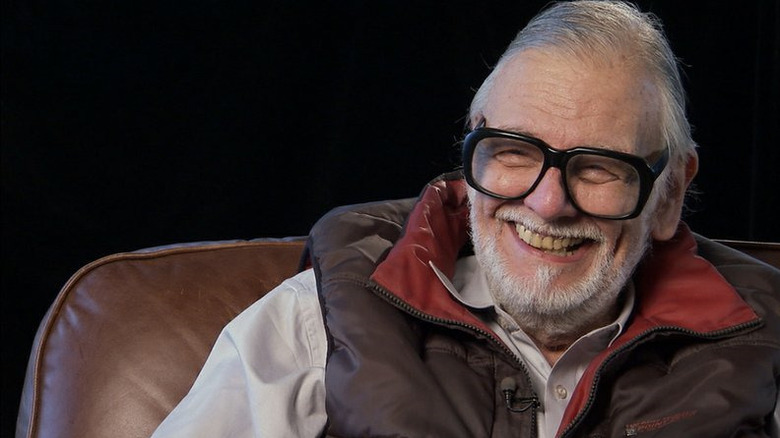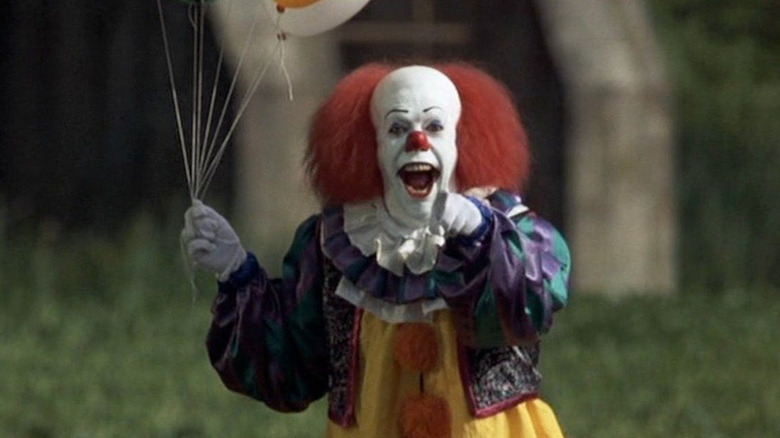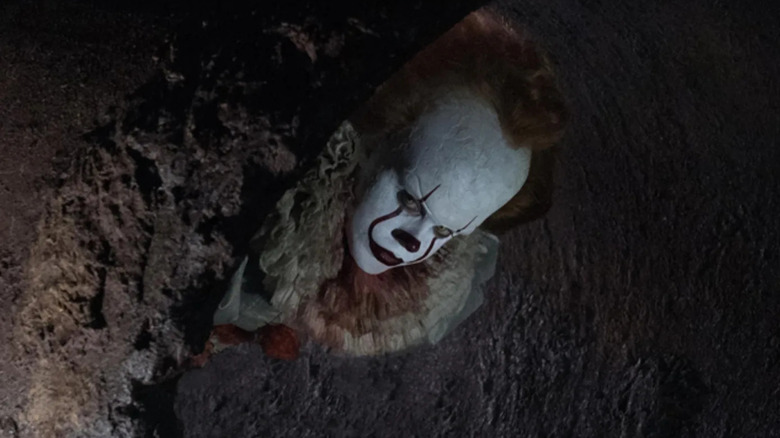The George Romero-Helmed Stephen King Adaptation We'll Never Get To See
Movie fans and horror fans alike mourned the death of the legendary George A. Romero in July of 2017. It wasn't just the passing of a man, but the cornerstone of a genre. With his scrappy indie movie "Night of the Living Dead" in 1968, the American-Canadian filmmaker ushered in a new era of modern horror. He then one-upped himself with various genre-centric works over the course of his career. You know the names: "Dawn of the Dead," "Day of the Dead," "Creepshow," "Knightriders," "Land of the Dead." Even his slept-on work, like the bio-horror flick "The Crazies" and proto-A24 vampire drama "Martin," have gotten second looks and earned cult followings.
Since Romero's death, fans have long wondered about the projects that could have been. Because Romero famously favored creative freedom outside the studio system, there are plenty of projects over the writer-director's 50-plus year career that he signed on for but later departed due to creative differences. On top of that, he was such a prolific filmmaker that it was hard to pin him down; scheduling differences were another common reason for his departure. One such "What if?" that almost came to fruition was Romero's place at the helm of the famed 1990 miniseries adaptation of Stephen King's "It."
Here's how close we came to seeing The Godfather of the Dead take on the King's opus.
Beep Beep, Georgie
In an oral history about the "It" miniseries, screenwriter Lawrence D. Cohen (who adapted King's "Carrie" for Brian De Palma's classic 1976 feature) lays out how Romero signed onto the project, which was to be "the horror miniseries to end all horror miniseries." Producers brought Romero on board with the aim of adapting Stephen King's classic book and its 1100-odd pages into a whopping eight-to-10-hour program for ABC, to be aired over five nights. They even went so far as to announce the "Monkey Shines" director's attachment to the project (with no cast announced) in 1989. By this point, Romero and King had already worked together on the brilliant EC Comics-throwback anthology horror film "Creepshow" in 1982, so the author was comfortable with the father of the modern zombie film translating his work to the big and small screen alike.
According to Cohen's account of the journey, the suits' intrusion contributed to Romero's departure:
"Speaking candidly, ABC was always nervous about It, primarily the fact that it was in the horror genre, but also the eight-to-ten hour commitment. They loved the piece, but lost their nerve in terms of how many hours they were willing to commit. Eventually, they were agreed to a two-night, four-hour commitment and at that point, a couple of things happened. George dropped out, primarily because he had a scheduling conflict, but truthfully I think getting only four hours instead of eight took the magic out of the project for him."
There followed a change in the producers' line-up and a production move to Vancouver, where Tommy Lee Wallace ("Halloween III: Season of the Witch") took the wheel for the truncated adaptation, now airing four hours over two nights instead of the original 10 over five.
What Could Have Been
The primetime network held certain standards regarding its onscreen violence that made adapting "It" — about an ancient entity that takes the form of, among other monsters, a fear-harvesting, child-killing clown (and that's not even the most controversial part of the book) — a tall order. Producers fretted (bafflingly — why hire the guy, knowing he already had two films on Britain's infamous "Video Nasties" list?) that Romero's iteration of "It" would be too wild for television. Dissatisfied with the ever-receding creative pocket with which to adapt a sprawling work of widely-read horror (you'll recall, it took two feature-length, hard-R movies for Andy Muschietti to tell the tale), and further pressured by a scheduling conflict (Tom Savini's remake of Romero's "Night of the Living Dead," was underway), Romero dipped on the project.
The "It" miniseries presented at the turn of the decade worked on many levels (well, not everyone); vicious clowns emerging from shower drains were a sizeable concern for this writer as a child. Stellar special effects and a still-celebrated performance by the legendary Tim Curry as Pennywise the Clown kept the miniseries scary enough to traumatize a generation of children. After New Line Cinema took a swing at the adaptation and Bill Skarsgård earned widespread praise as a more ancestral version of the dancing clown, Curry's version of Pennywise re-entered the pop culture conversation and debates about which version of the character is superior still rage among horror fans.
Given his prior collaboration and professional rapport with King, Romero's adaptation of "It" would no doubt have been closer to the visuals and vibe the author had in mind, and no one can argue that it would have been just as bloody as the source material. Had Tom Savini not been at the helm of a Romero remake already, he could have been brought aboard the special effects team, and then we're really cooking with peanut oil. How might the werewolf have looked as he attacked the children? Stanley's decapitated (but still talking and taunting) head in the fridge? The climactic spider creature? We might have been treated to scenes from the novel thought impossible to bring to TV, like the gnarly, bizarre death of Patrick Hockstetter (hint: he got off easy in the 2018 movie). All of these things are lost like tears in the rain, but we can always imagine what could have been.


